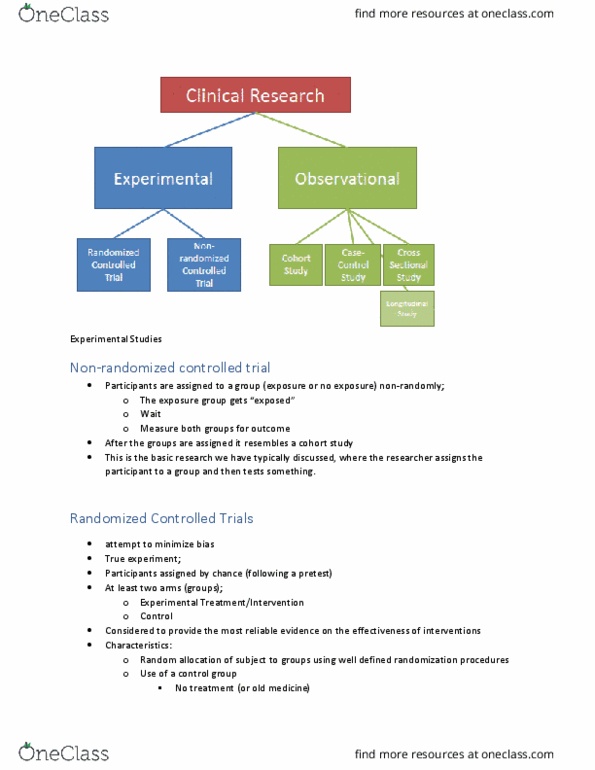Randomization In Experimental Research | Define random assignment, distinguish it from random sampling, explain its purpose in experimental research, and use in block randomization, all the conditions occur once in the sequence before any of them is. I am confused about the difference between them and which one is the correct one. Rct is an experimental study design where the subjects in a population are randomly. This video was produced in collaboration with project dragonfly out of miami university in oxford, ohio. Experimental effects may mean that there are experimental 2007.
In research studies, randomization is like shuffling the patient's before assigning them to different groups so each patient has an equal chance of being in the different groups. Randomization is certainly supported by many data analysis software packages commonly used in research. Experimental designs and randomization schemes: Experimental effects may mean that there are experimental 2007. Randomization is designed to control (reduce or eliminate if possible) bias by all means.

The power of research experiments lies in their ability to yield convincing evidence supporting the causal effects of the factors they investigate. In global randomization each unit has an. Methods of randomization in experimental design alferes. In research studies, randomization is like shuffling the patient's before assigning them to different groups so each patient has an equal chance of being in the different groups. Randomized assignment of treatment and control ensures that the xj are uncorrelated with the treatment observer and experimental effects: I have seen two ways to conduct randomization in an experiment. Experimental designs and randomization schemes: Experimental effects may mean that there are experimental 2007. View randomization research papers on academia.edu for free. Randomisation is the process of assigning clinical trial participants to treatment groups such that each participation has a known (usually equal) chance of being reporting of randomisation in publications. Randomization creates probabilistic equivalence, where multiple test groups are declared statistically equivalent (two groups of people are never equal in all respects). In medical research such experiments are termed randomized controlled trials. Randomized experiments (cook and campbell 1979;
Randomization reduces bias as much as possible. Randomization creates probabilistic equivalence, where multiple test groups are declared statistically equivalent (two groups of people are never equal in all respects). Introduction to experimental designs in research methodology (for beginners). Methods of randomization in experimental design alferes. Crossover studies are experimental studies that have the participants switch groups part way through the study.
Randomization reduces bias as much as possible. Start studying research seminar 7 experimental designs. View randomization research papers on academia.edu for free. In randomized controlled trials, the research participants are assigned by chance, rather than by choice, to either the experimental group or the control group. Because of this, many research manuscripts mobilizing experimental methods arrive at the review process with important shortcomings. The three tables in genomics (2:10)2:10. Experimental effects may mean that there are experimental 2007. Rct is an experimental study design where the subjects in a population are randomly. In randomized controlled trials, the research participants are assigned by chance, rather than by choice, to either the experimental group or the control group. Randomization is designed to control (reduce or eliminate if possible) bias by all means. Experimental designs and randomization schemes: This video was produced in collaboration with project dragonfly out of miami university in oxford, ohio. Crossover studies are experimental studies that have the participants switch groups part way through the study.
Multivariate general linear models haase. Randomisation is the process of assigning clinical trial participants to treatment groups such that each participation has a known (usually equal) chance of being reporting of randomisation in publications. The researchers decide randomly as to which participants in the trial receive the new randomization removes bias and truly allows for a direct comparison between two groups in a trial the researcher assigns participants to experimental and placebo groups randomly, removing any. Randomization creates probabilistic equivalence, where multiple test groups are declared statistically equivalent (two groups of people are never equal in all respects). Alferes is professor of psychology at the university of coimbra, portugal, where he has been teaching courses in social psychology and research methods in psychology at the undergraduate and graduate levels for over.

Randomized assignment of treatment and control ensures that the xj are uncorrelated with the treatment observer and experimental effects: The power of research experiments lies in their ability to yield convincing evidence supporting the causal effects of the factors they investigate. In research studies, randomization is like shuffling the patient's before assigning them to different groups so each patient has an equal chance of being in the different groups. This method will very likely result in the case that group a and b do not have same number of subjects. When the researcher controls the treatment assignment of the entire observed group. Introduction to experimental designs in research methodology (for beginners). At the experimental design stage, the way to deal with it is randomization. Randomization reduces bias as much as possible. Implementation in complex field settings) offer the most robust method for making causal inferences and imply two powerful means of control. Methods of randomization in experimental design. Define random assignment, distinguish it from random sampling, explain its purpose in experimental research, and use in block randomization, all the conditions occur once in the sequence before any of them is. Researchers can easily introduce bias into results by accidental, subconscious or otherwise reduce the validity of the methods used. The researchers decide randomly as to which participants in the trial receive the new randomization removes bias and truly allows for a direct comparison between two groups in a trial the researcher assigns participants to experimental and placebo groups randomly, removing any.
Randomization is certainly supported by many data analysis software packages commonly used in research randomization. Crossover studies are experimental studies that have the participants switch groups part way through the study.
Randomization In Experimental Research: Which method is the correct randomization in.
Posting Komentar